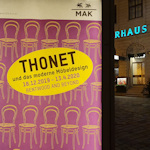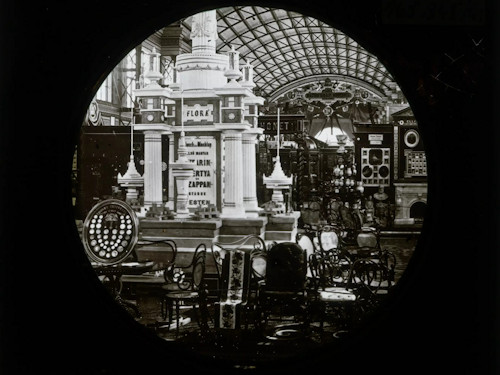
If you could sum up the character of Vienna in one mundane household item, then it might be a wooden chair. Though the word mundane hardly applies to the groundbreaking No. 14 Thonet chair.
- Hugely influential iconic chair design from the 19th century
- Manifestation of the Viennese coffee house
- Normally viewable at the MAK or Furniture Museum
- See also:
A chair like no other

(Thonet Nr. 14 chair; 1859 model, around 1860–1870; Wien Museum Inv.-Nr. 199612; excerpt reproduced under the terms of the CC BY 4.0 license; photo by Birgit and Peter Kainz)
A simple mass-produced chair doesn’t seem quite suited to the role of astounding work of art or design. But one such item left an indelible mark on Viennese and world history thanks to its grace, economy, innovative production, and entrepreneurial history.
Consider Thonet’s No. 14 chair the Mona Lisa of furniture, achieving excellence in the worlds of art, culture, business, and history.
The design
The chair stemmed from the creative brain of the designer and businessman Michael Thonet in mid-19th century Vienna.
Thonet was no local, having been born in Boppard (modern-day Germany) in 1796 during that town’s brief possession by France. He moved to Vienna in 1842.
As you can tell from the photo above, the chair exudes an elegant simplicity highlighted in the curved continuous wooden pieces. It has a timelessness to it, too.
The remarkable aesthetics tell only half the story though…
The production
The key to the chair’s exalted status rests in the means of production as much as the outstanding design.
Bending pieces of wood proved a troublesome affair for much of history, but Thonet managed to patent efficient mechanical processes for doing so. This opened up new realms of “bentwood” furniture design for his company and allowed industrial production of the results.
With the No. 14, you had a lovely piece of furniture that was relatively cheap and could be produced and assembled quickly in large quantities. Consider that a recipe for success. All it needed was a bit of an entrepreneurial push.
Fortunately, Thonet proved ahead of his time in business, too, employing distribution and marketing techniques familiar today to bring his products to the world. The Thonet company sold millions of the No.14 chair.
All of this became possible through the accumulation of talents in one man: an eye for design, industry and business.
The announcement of his death in the March 4th, 1871 edition of the Neues Wiener Tagblatt noted (my rough translation):
Through his invention of furniture made from bent wood, he created a completely new branch of industry in Austria, whose popularity soon carried his name to every corner of the world

(Thonet furniture at the 1873 World Exhibition; publishing house: Wiener Photographen-Association; Wien Museum Inv.-Nr. 169945/43; excerpt reproduced with permission under the terms of the CC0 licence)
Thonet is buried in Vienna’s main cemetery (Group 14B Grave 1), close to the collection of famous composer graves around Beethoven, Schubert, and Johann Strauss.
The impact
As the poster child for bentwood design, the chair (and its colleagues) revolutionised the use of wood in household furnishings, helped ignite the era of mass-produced furniture, and accelerated the spread of “good” design beyond the villas and palaces of the aristocracy and wealthy business folk.
You might also consider the chair as the Godfather of the coffee house chairs you see throughout Vienna today. (Cafés were Thonet’s primary market at the time.)
Think of the established, traditional Viennese coffee houses…the ones where the minute hand moves treacle-like through a cake-shaped space/time continuum and the cares of this world seem to seep away into the upholstery.
Inside such locations, you’ll almost inevitably find some bentwood-style seats that owe a design debt to Thonet.
Incidentally, Thonet came to Vienna at the urging of one Prince Metternich. So our Machiavellian diplomat turns out to be the accidental father of two world-class Viennese inventions: the No. 14 chair and the Sachertorte.
Where to see the No. 14
The chair made an appearance in the excellent Bentwood and Beyond exhibition at the MAK. You should still be able to see one of the originals in the same museum: drop into the permanent Historicism Art Nouveau exhibition, which contains various bentwood chairs and normally includes the No. 14.
Another option is the Möbelmuseum Wien (Vienna Furniture Museum), which has a remarkably early Thonet No.14 chair in its Wiener Moderne permanent display.